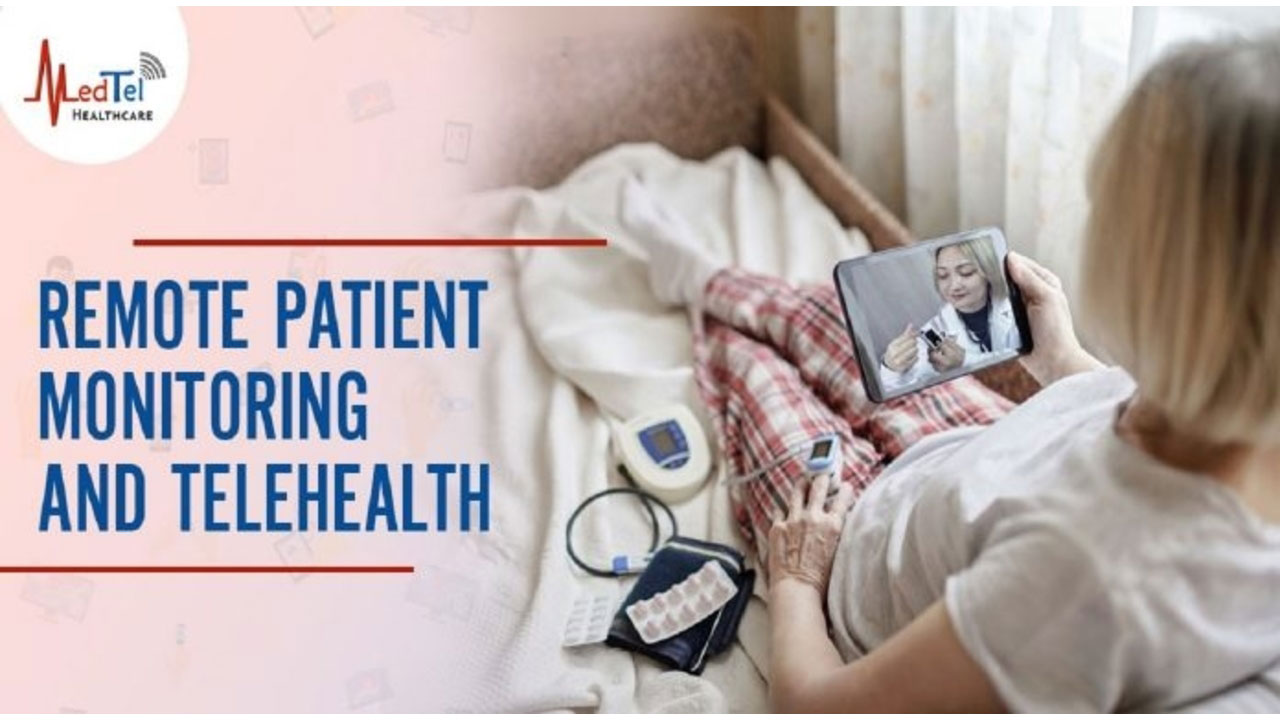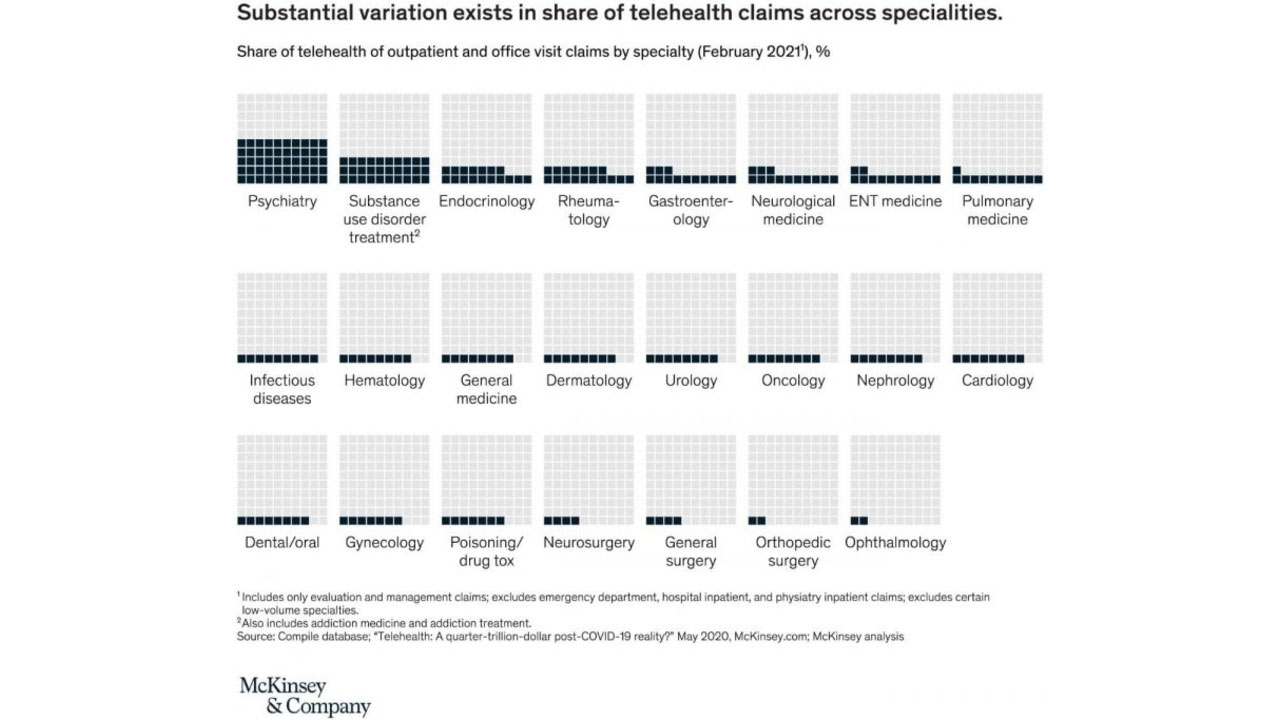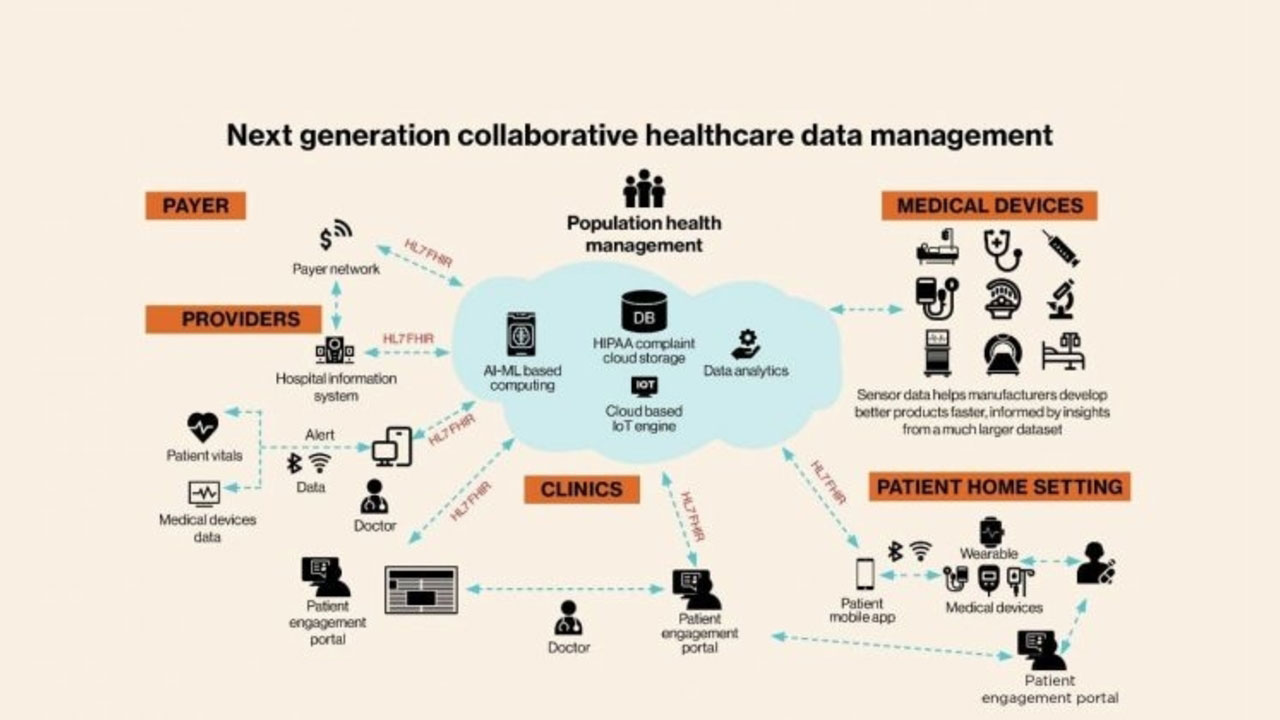Remote Patient Monitoring and Telehealth
According to the Mckinsey Report of May 2021, telehealth utilization was 38 times more than it was during the pre-covid times. Even though the deployment of telehealth in various specialty departments is variable, the overall increase is promising and is an indication of the sustenance of telehealth post-pandemic.
Source: McKinsey.com, Mckinsey analysis on Telehealth
Telehealth is an all-encompassing term that includes both clinical and non-clinical services. Healthcare delivery systems like Remote Patient Monitoring(RPM), Digital Therapeutics, and other clinical services are all different telehealth solutions whose usage have accelerated since Covid-19.
The Reason for the Sudden Surge in the Use of Telehealth
Just like the old saying, it was a necessity that resulted in this sudden increase in telehealth usage. “This utilization reflects more than two-thirds of what we anticipated as visits that could be virtualized”, opines the authors of the Mckinsey report. According to them, it was made possible by:
The Change in Attitude of the Consumers(Public) towards Telehealth
There has been a major shift in the attitude of the general public towards Telehealth since the pandemic. 40 percent of the total consumers who used telehealth solutions like RPM to seek care during the pandemic are willing to continue its usage post-pandemic. Around 40-60% of the same population are optimistic about synergizing clinical practices and Revolutionizing Digital Health solutions for the development of a broader range of services like digital front doors.
The Shift in the Provider’s Attitude
A balanced consumer-provider interest is essential for the sustenance of telehealth utilization. There has been a growth in the percentage of doctors who are willing to give virtual consultations post-pandemic. 54% of the doctors who adopted telehealth methods during the first wave are ready to continue it. The health care system as a whole is scrutinizing the potential of telehealth to tackle limitations like space restrictions and other challenges.
The relaxation of regulations during the pandemic allowed providers to give telehealth from outside their offices. These, along with many temporary relaxations also influenced the providers’ attitude to telehealth.
Investor’s Interest
The telehealth industry boomed with the outbreak of the pandemic. The investment in Connected Care Solutions in the first half of 2021 is twice the investment in 2019 and more than the whole investment for the year 2020. This new competition is beneficial for the industry as it will bring about innovative digital solutions to enhance the global healthcare delivery system.
The Future of Telehealth Solutions
Also read: The Future of Digital Healthcare and Patient Monitoring
Virtual Emergency Visits on Demand
According to the Mckinsey Report, virtual on-demand emergency consultations are a beneficial alternative to urgent-care visits, emergency departments, or after-hour visits. An RPM system that triages patients and flags those who need urgent care is ideal for this setup. This digitized care delivery system saves the patient from unwanted visits to hospitals at odd hours in case of an emergency like acute sinusitis. The patient can avail the care of a doctor from the comforts of the house through this setup.
Virtual or Near-Virtual Office Consultations
Virtual office consultations with a service provider can be done effectively for primary healthcare that doesn’t require physical examinations. Virtual sessions for the behavioral therapy and follow-up consultations can also be performed successfully using this. An omnichannel healthcare delivery system that couples virtual visits with remote patient monitoring, self-diagnosis, and other forms of digital health solutions can be introduced to unleash the maximum potential of telehealth.
Near-virtual office visits can be done by patients with flu or other diseases that require lab testing. The consultation can be done virtually, followed by a lab test at a nearby center. Thus these types of visits can be leveraged by patients to avoid unwanted travel and to cut costs.
Medication Administration at Home
Telemedicine subsets like RPM along with a virtual consultation of the provider can be used to conduct processes like drug infusions from the comforts of home. For instance, the provider can virtually monitor a nurse delivering a drug to the patient and can track the person’s vitals using RPM solutions.
Telehealth- The Changing Face of Healthcare
Source: The Future of Healthcare by Biswajit Biswas
Telehealth, if used strategically, can revolutionize the current healthcare delivery system. By incorporating AI-assisted digital solutions to clinical practices, providers get time to focus on crucial areas, and consumers get accurate, reliable care at a reasonable price.
For more details, please visit us at Telemedicine Future in India MedTel Healthcare
Telehealth is the need of the hour, and it is meant to stay. Telehealth along with its subsets like RPM, Health Stations, and Covid-19 solutions has the power to integrate the fragmented healthcare system to form a collaborative healthcare system that provides reliable, accessible, and affordable healthcare through efficient data management and omnichannel functioning.
Source: The Future of Healthcare by Biswajit Biswas


